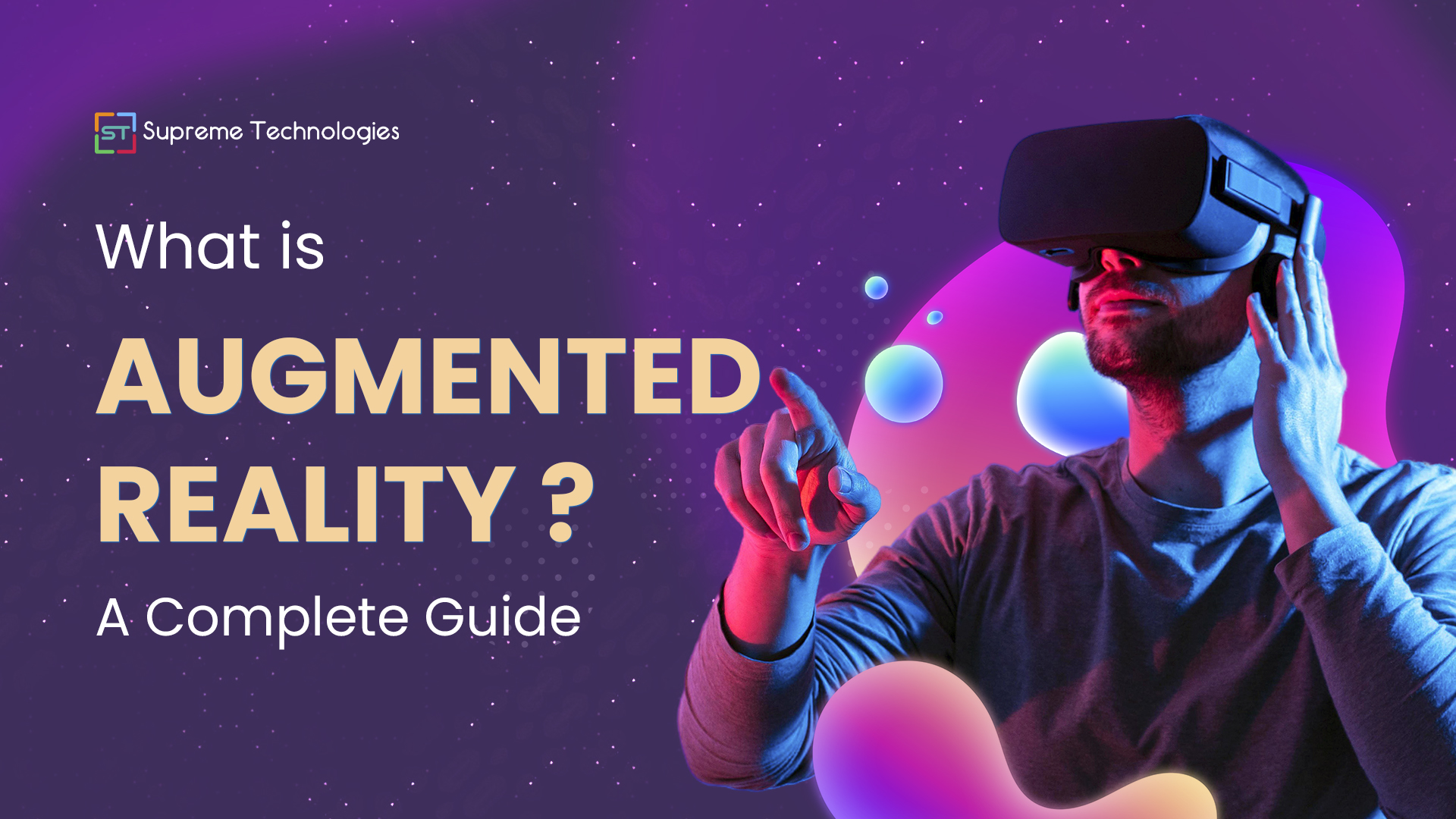Imagine doctors with superpowers, able to see inside patients without cutting them open. That’s what augmented reality (AR) is bringing to healthcare. AR adds digital information to what we see in the real world, like magic glasses that show extra details. This technology is changing how doctors work and patients get care in hospitals and clinics. From helping surgeons perform tricky operations to making it easier for nurses to find veins, AR is making healthcare better and safer. Let’s find out how this exciting tech is shaping the future of medicine.
What is Augmented Reality?
Augmented reality is an improved, better version of a real-world environment achieved via digital visual elements, sounds, and other sensory stimuli through holographic technology.
Augmented reality is one of the innovative technologies that merge digital elements with the real world, to build an enhanced version of technology. AR can even show you how furniture looks in your home before, you buy it. It’s like bringing your imagination to life, adding a layer of passion and convenience to your daily life.
AR incorporates three features:
- a combination of digital and physical worlds
- interactions made in real-time
- and accurate 3D identification of virtual and real objects
Moreover, Augmented Reality offers a better way to design, curate, and deliver consumable instructions by overlaying digital content in real-world work environments. When a business understands what AR is and how to use it successfully, everyone can work remotely while collaborating efficiently.
Why Augmented Reality in Healthcare is a Boon for Medical Professionals?

Here is everything about why augmented reality is helpful for medical professionals:
AR in Patient Care
- Many patients are there who are unable to explain their symptoms to their doctor. This is where augmented reality can help. By using this technology, people can address their concerns, and know about the symptoms and state of their health. Additionally, doctors can help them to know the effects of their current lifestyle and guide them on how to make positive changes.
- Using Augmented reality services, patients can now see how drugs work within their bodies rather than reading the long descriptions of prescribed medicines.
- AR allows for storing life-saving information on custom apps. For example, Radboud University of Netherlands has built an AED4EU AR-driven mobile application. This app tells you the actual location of automated external defibrillators. So, in case of an emergency, you can access important life-saving information.
AR for Surgeons and Nurses
- In some cases, it is difficult to find the vein to draw blood from patients’ hands or inject intravenous shots. This is where AR hand-held scanner technology comes into play. With the help of this technology, a nurse can easily see the vein to draw blood. This way, it can save time and ensure that someone does not face any problems.
- Surgeons can use AR to operate with precision. This technology prevents any risks and increases the chances of success rate of many complex surgeries.
Everyone knows the importance of staying healthy, but many of them take their health for granted. Augmented reality technology helps in diagnosing the human body to know the current status of their health. Dietitians and nutritionists can also take advantage of AR learning to motivate and persuade people to bring wanted changes to their lifestyles.
AR In Medical Training
According to a report by the Association of American Medical Colleges (AAMC), the United States may experience a shortage of 1234000 physicians by 2034. Augmented reality (AR) enabled virtual training offers a deeper understanding of bodily functions, enabling medical professionals to handle more complex cases within a specific timeframe.
Flex AR provides medical students with a tangible, AR-powered anatomy learning experience using a prototype tool. This app allows users both written and 3D visual information about anatomy without requiring traditional study materials.AR offers an immersive, interactive learning experience that enhances understanding and retention.
AR In Training Physicians on New Therapies
Life science organizations can utilize augmented reality services to educate healthcare providers about the latest therapies and medicines that enhance treatment outcomes. This enables agencies to produce compelling visualizations that demonstrate the effects of a disease or virus on the human body at various stages. It also allows them to virtually illustrate how the situation can be managed using innovative treatment procedures, therapies, and medications.
Conclusion
Augmented reality is bringing exciting changes to healthcare. It helps doctors see inside patients without surgery, makes it easier for nurses to do their jobs, and helps patients understand their health better. AR also improves medical training and helps explain new treatments. As this technology grows, it could make healthcare safer, more accurate, and easier to understand for everyone. While there’s still more to learn, AR is already showing great promise in making medical care better for both doctors and patients.
For more insights, visit our blog








